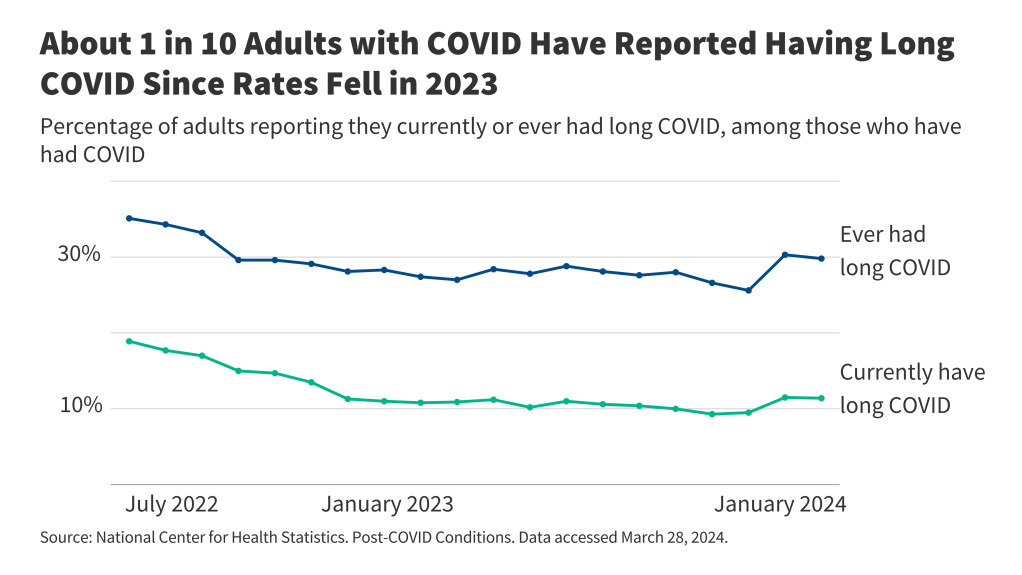
The independent source for health policy research, polling, and news.
Long COVID Rates Appear to be Stabilizing, Affecting About 1 in 10 Adults Who Have Had COVID
Rates of long COVID have begun to flatten. About 1 in 10 adults with COVID have reported having long COVID since rates fell in 2023, according to a KFF analysis of the latest data from the Centers for Disease Control and Prevention. If the rate continues to hold steady, new forms of prevention or treatment may be important to achieve future reductions in long COVID.
As of March 2024, 7% of all adults (17 million people) reported that they have long COVID. Among the 60% of adults who reported ever having had COVID, roughly 3 in 10 reported having long COVID at some point and about 1 in 10 reported currently having it. The ongoing gap between the two long COVID rates indicates that people are continuing to recover, even as rates stabilize.

Long COVID rates are highest among adults who are transgender or who have disabilities. Among the 17 million currently affected, 79% report having any activity limitations, and 25% report that long COVID limits their activities a lot. These limitations can lead to employment and material hardships, with 4 in 10 reporting food insecurity, 2 in 10 reporting difficulty paying rent or mortgage, and 1 in 10 reporting that they had to stop working for a period of time.
People with long COVID also report greater challenges accessing and affording health care. As COVID is treated more and more as another respiratory virus, this group could face greater barriers to health care going forward.